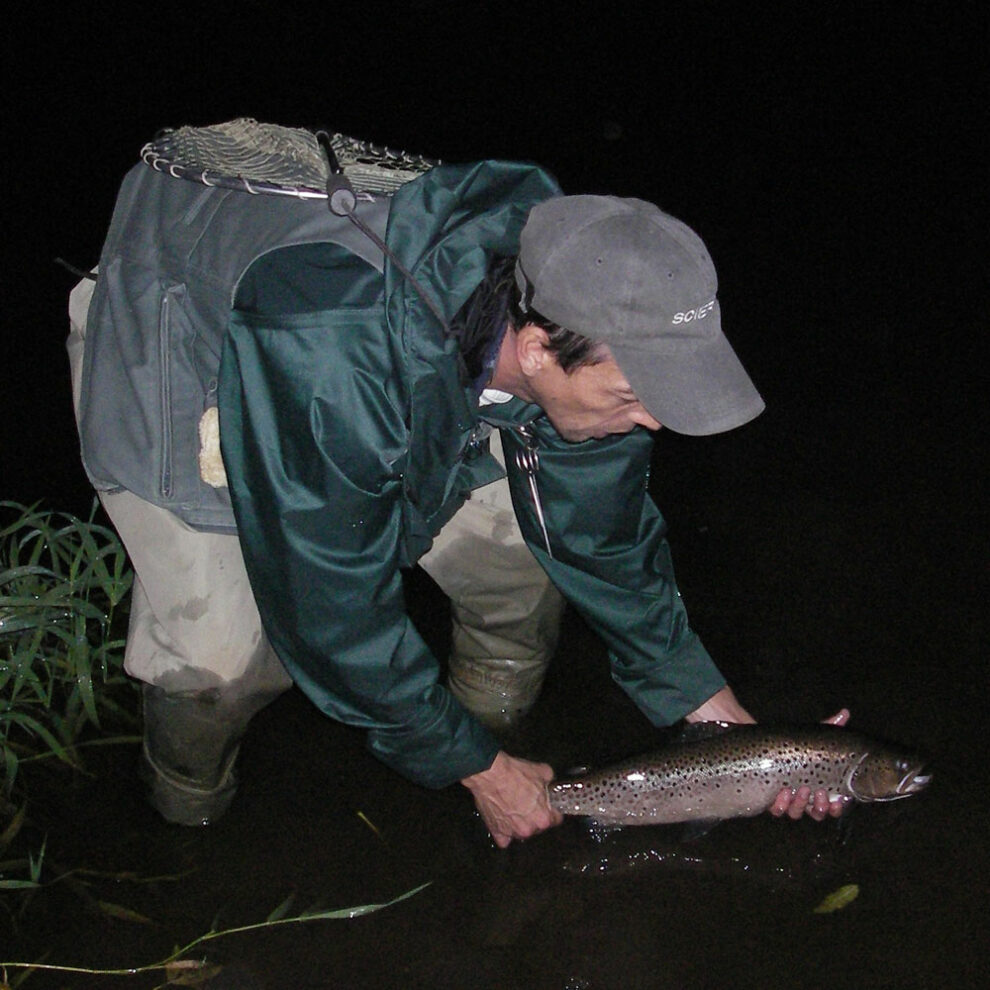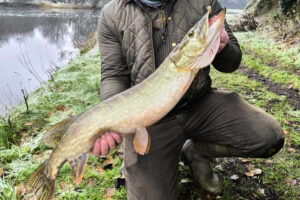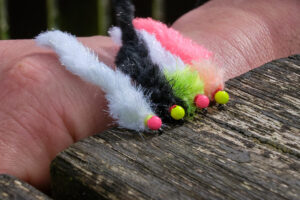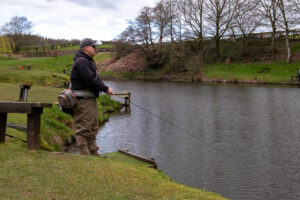Northern Ireland is the home to the biggest freshwater lough in the British Isles and Ireland, which covers a vast 153 sq miles (400 sq km). Its name is Lough Neagh from the Irish: Loch nEathach meaning “Lake of Eathach” for its size, it is quite shallow around the margins and the average depth in the main body of the lake is about 9 m (30 ft); although at its deepest the lough is about 25 metres (80 ft) deep. Of the 4550 km² catchment area, around 9% lies in the Republic of Ireland and 91% in Northern Ireland; altogether 43% of the land area of Northern Ireland is drained into the lough, which itself flows out northwards to the sea via the River Bann which is historically a great Atlantic Salmon river. As one of its sources is the Upper Bann, the Lough itself can be considered a part of the Bann.
An old Irish legend tells how the Lough was formed when Ireland’s legendary giant Fionn mac Cumhaill or Finn McCool scooped up a portion of the land and tossed it at a Scottish giant. He missed, and the chunk of earth landed in the Irish Sea, thus creating the Isle of Man.
Six counties have shores on the Lough: Antrim, Armagh, Down, Londonderry, or Derry and Tyrone; Fermanagh is the only county that does not. Towns and villages near the Lough include Antrim, Crumlin, Randalstown, Toomebridge, Ballyronan, Ballinderry, Moortown, Ardboe, Maghery, Lurgan and Magherafelt. It is through these town lands that some of the best fly fishing rivers flow. The Maine, The Ballinderry, The Crumlin, The Kells, The Ulster Blackwater, The Upper Bann and the river I spent most of my childhood and still fish today, The Six Mile water. This river runs through the town land of Antrim, it is a lot longer than six miles long and its name comes from when the Normans built the castle at the coastal town of Carrickfergus around 1180. They placed a line of ten outposts along the river, which was then called the “Ollar” – River of the Rushes. In time, the soldiers making the journey from Carrickfergus to Antrim reached the river at this spot when they had travelled six miles, so they began to call the Ollar the Six Mile Water.
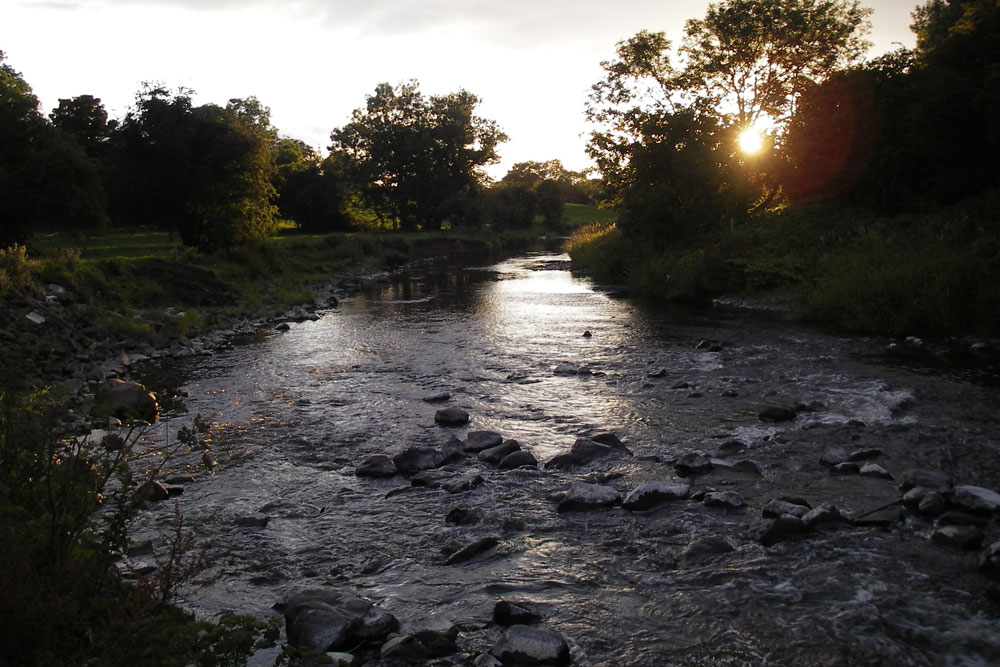
This Lough and the rivers that feed it all have wild resident brown trout. Also present is the king of fish, the Atlantic salmon, which run up the river Bann from the sea through the lough and up the rivers to their home streams to spawn. I often fish for both. Perhaps for me though, one of the greatest things about this area is it is the home to a trout that is locally known as the Dollaghan, a trout which many fly anglers outside Ireland haven’t heard of. Perhaps this is due to Northern Ireland’s past troubles, no doubt the troubles were a factor which possibly kept most visiting anglers that came to Ireland going to the Irish Republic. Who could blame them, the South has some fantastic fishing and never had much bad publicity, unlike its neighbour.
So let me tell you more about this marvellous trout that I have fished for my entire life.
Now it’s no ordinary trout if there is such a thing, it’s more like a sea trout, and they can grow big because they feed in the lough. The name Dollaghan comes from the Irish Gaelic word dulach that means swift running, and the translation of Dollaghan means ‘run of fish’ or ‘running fish.’ Local names for these fish include Buddagh or Breddach, which translate to ‘big fat fellow’ and are remarkably like a Ferox. There is also the Salmon Trout, a silver fish, giving them a sea trout appearance. This is not the only similarity they have with their sea run relations, they are noticeably light sensitive and shy when they are in the rivers to spawn. Dollaghan can achieve growth rates like Atlantic salmon while they feed in the lough and on their return to their native rivers, they can weigh two to well into the teens of pounds, and there are stories of bigger.
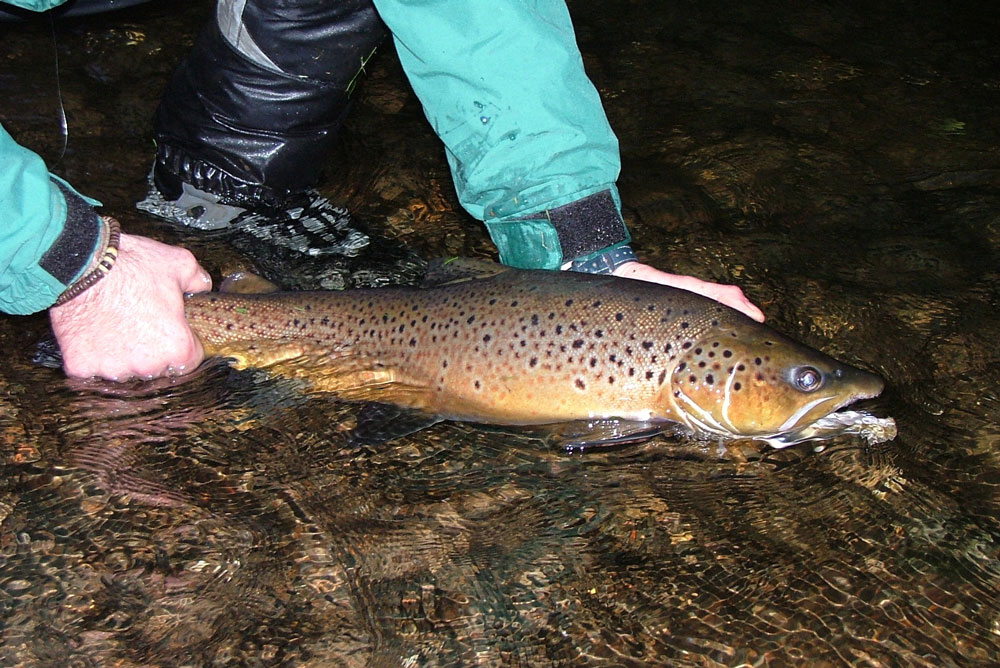
My personal best was a large cock fish of 16lbs, I have hooked larger, and I know anglers who have been lucky enough to land some huge fish. Like river sea trout fishing, the best time to fly fish for them can be late in the evening and at night. I love fly fishing at night. To me, there is something magical about it, it’s the realm not only of Dollaghan but of bats, otters, and owls. The stillness and the sounds of the river, the sights you see, for me, it’s wonderful.
When fishing rivers at night, make sure that you know where you are walking, believe me, you would rather not end up swimming in a river at night! For first timers, I’d recommend hiring a qualified guide, yes someone like me, and I make no apology for the obvious plug. I learnt by growing up on the river, fishing with my father, and by trial and error. If you are on holiday or just visiting and want to maximise your chances of hooking a Dollaghan, a guide who knows the water and the tactics will help. And if you’re not used to the rivers and have never fished them at night, a guide can help from a safety standpoint as well and tell you where to step. Believe me, I have seen many big men get quite unsettled or nervous, the mind can play tricks at night, and things sometimes do go bump in the night. So if you’re new to night fishing, it’s nice to have company.
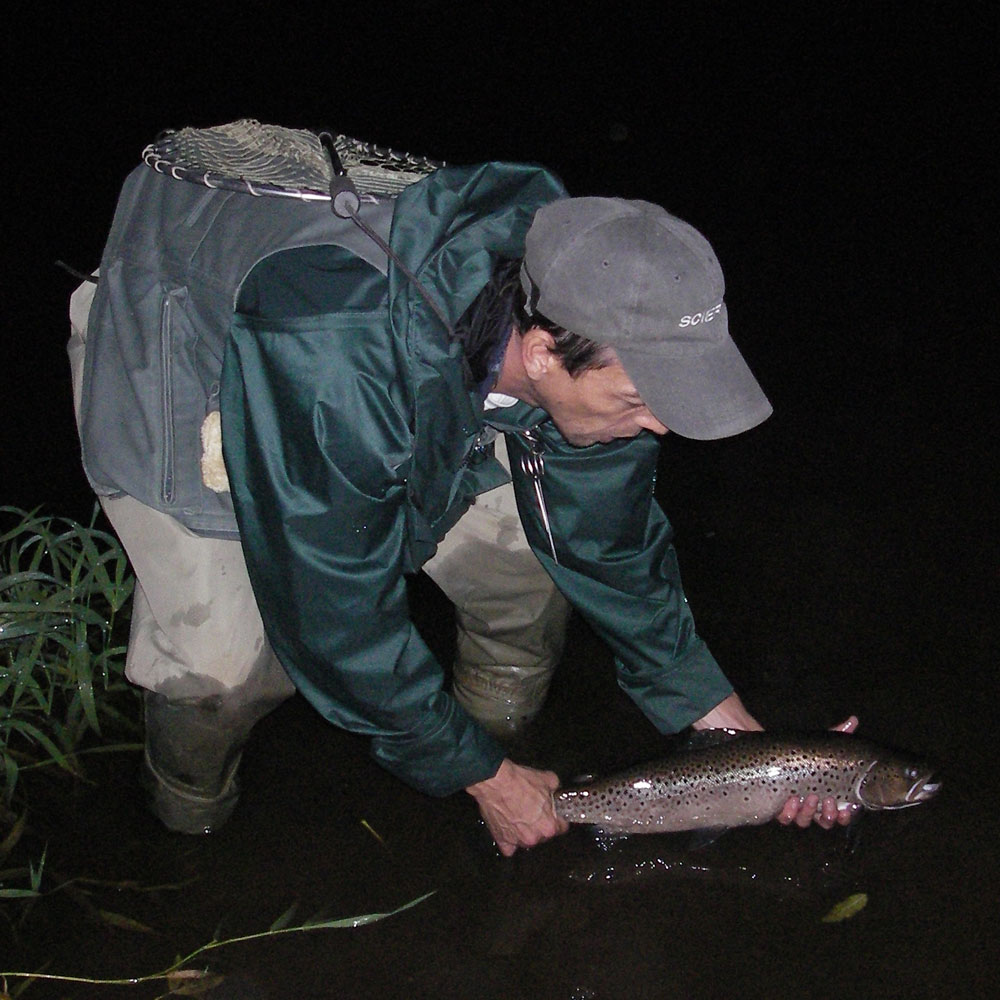
Landing a large Dollaghan needs a large helping of luck, just to keep them on. They have a hard mouth for a trout, they also violently shake their head while falling back, this is normally how you can tell you have hooked something substantial, and is the crunch time if they are lost. A lot of the big fish are lost, however, in a season’s fishing, I normally catch quite a few fish over six pounds, big wild trout in anyone’s book. Each season, there is always some lucky angler who will get a monster over 10lbs.
Tactics for Dollaghan vary slightly from river to river. You can have good sport during the day, if the conditions are right, normally just before or just after a flood or when the water has a hint of colour and looks like a dark fine Irish whiskey. The most successful time for big fish is during the evening and night. Unfortunately, if it’s a moonlit night it is often very slow, strangely that’s often a good night for an occasional salmon that can make your night worthwhile.
The best conditions for night fishing are normally a thick cloudy sky a day or two after a flood when the water is crystal clear. If you know where the fish are, it can be super stuff, and this fly fishing can compete with anything the rest of the world can offer. You can land some fantastic fish, but like all fishing, it depends on luck.
Fly tackle is very much a matter of personal preference, for me, during the day, ordinary river trout gear is fine, but at night I prefer to go to the Cadence CSM 9’ 9” #8 rod. This is the perfect rod for night fishing for these heavyweight trophy trout. When these fish take, you want a rod with a lot of backbone that can help you with hooking. When fresh from the lough, the large Dollaghan are powerful fish and I like a rod that can put pressure on them, otherwise you can lose them in the rocks and snags, especially at night.
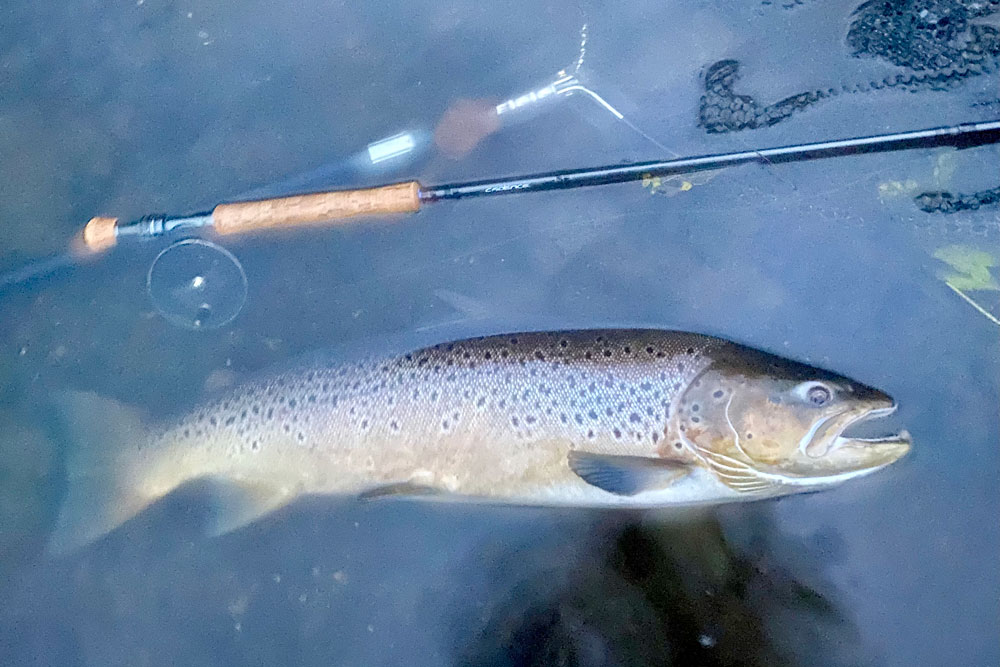
As for flies, they are standard patterns. During the day, small traditional trout flies like Black Pennel, Dunkeld, Gold Head Hares Ear and, of course, Tungsten nymphs take their share of fish (check out my blog on Fishing with Tungsten Flies here). In the evenings, I change to night flies which are like traditional sea trout and salmon flies, hair wing salmon flies or an Irish shrimp fly seem to work best. I fish these on an intermediate or sinking line and a short leader fished back using a slow figure of eight retrieve. They will also take a floating fly stripped across the surface similar to sea trout, a large Muddler or a Chernobyl Ant are at times great. One critical tip when night fishing is to remember when changing flies is to turn you back to the water. Shining your torch on the river will spook fish and is also bad etiquette if other anglers are around.
Whether Dollaghan feed on their return to the river is a point of conjecture. I generally practice catch and release so, there are not too many stomach contents to inspect. However, in those that I have looked at, there is no evidence to suggest that these trout are gorging themselves. Perhaps, like sea trout, they do take the odd invertebrate. Certainly, the Dollaghan do not eat lots when they are in the river and take like the salmon at times, probably due to pure aggression.
Dollaghan, like salmon, have certain lies you will find them throughout the river system, but like any large trout, they like a bit of cover – overhanging trees, undercut banks and so on. They will also lie around rocks and in deep runs and pools.
At home, Dollaghan fishing has become a lot more popular with local anglers, and I think the attraction of these wonderful and unique brown trout is their size and that they are truly wild.
The excitement you feel if you get a take at dusk going into darkness is unique, not knowing whether the next take will be a pound or 10lbs. It could even be a salmon, which happens regularly, and it keeps bringing me back for more night after night. The last few months of the season, when the Dollaghan fishing is at its peak, it’s like being on a night shift. I normally feel tired during the day and then come alive at night. It can take its toll on your body, it messes up your body clock, but, it’s worth it! The season is over by the end of October, a long winter aids recovery spending evenings tying flies, relaxing and remembering those late night battles.
In my job, I have been lucky to be invited to fish in many places in the world, on many rivers and lakes. This has been fantastic, and I hope to continue doing it, but it has also made me realise that what I have locally in the north of Ireland is wonderful and unique. Growing up on these local rivers, at times I may have taken them and their fish for granted. I think a lot of the local anglers I know do. Anglers the world over that have something a little special probably do the same, we just don’t realise what we have, and some of us are simply blessed.
Now it’s not all good news, we do have some problems, there are too many houses being built along rivers, pollution occasionally, illegal netting and legal netting without impact studies or even a quota, just to name a few. This does baffle me as it’s illegal to net wild trout in the south and not in Lough Neagh. Currently, we still have good fishing and the Dollaghan so far still survive, but our government bodies really need to start protecting the fish and its habitat better.
If we could get the issues addressed, we undoubtedly have one of the world’s finest brown trout fisheries. There are scarcely any places in the world where you will regularly catch wild brown trout over six pounds every year. We need to start treasuring these wonderful fish, their rivers and their unique home, the Lough.
Information
Six main inflowing rivers to Lough Neagh which, going anti-clockwise from the northernmost river are the river Maine and tributaries, Moyola, Ballinderry, Blackwater, Upper Bann, and my local Six Mile Water. The right time can be from the end of July, after a spate, through to the end of the season on the 31st of October. The biggest fish are normally caught in the rivers during September and October but normally only when conditions are right, and Dollaghan are perhaps the hardest to catch of all salmonids due to conditions in Ireland.
My Best Night Flies
Black & Blue Jam (S. Munn)
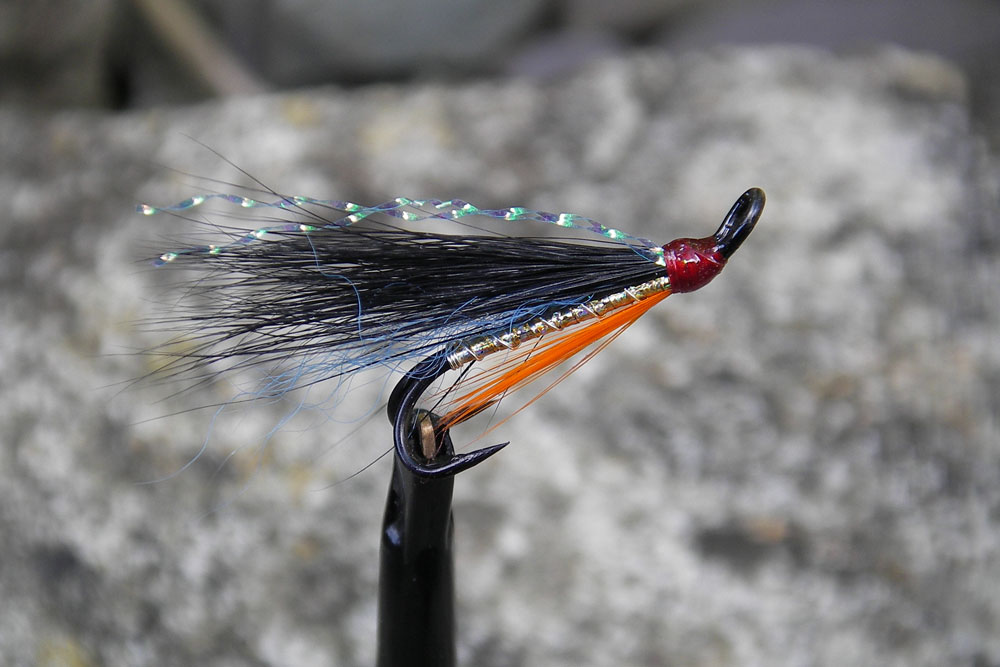
Hook: Samurai double 8 –12
Body: Gold or Silver holographic tinsel
Hackle: Orange cock
Wing: Blue Arctic fox with black squirrel or bucktail with a couple of strands of pearl twinkle.
Stevie’s best fly over the last year
Chernobyl Ant
The Fox Fly (R. Bryans)
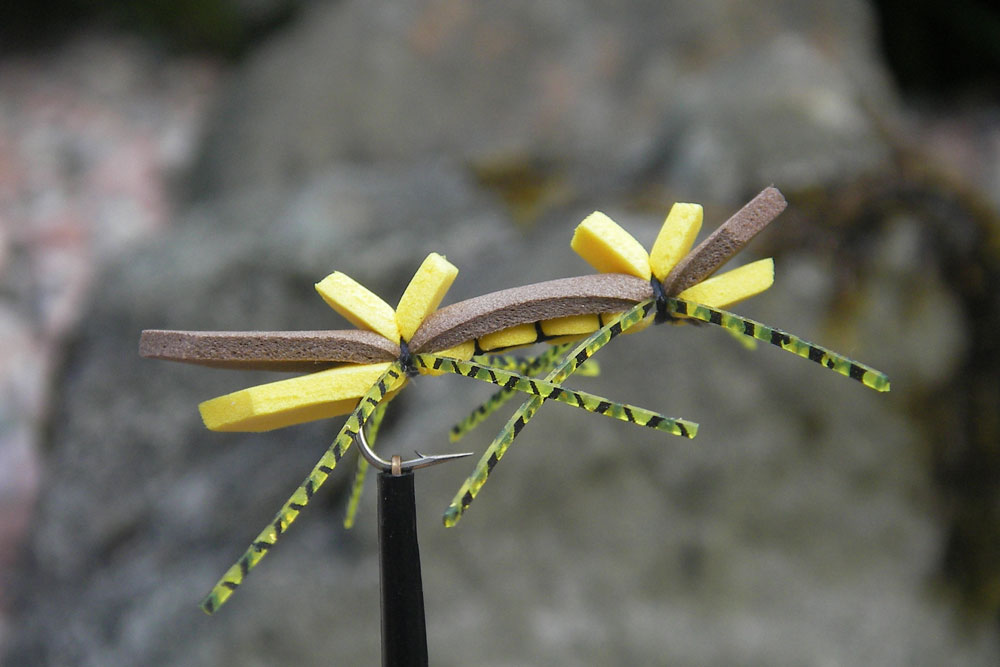
Hook: Samurai double 8 – 12
Body: Silver or pearl flat tinsel
Rib: Silver wire
Hackle: Guinea Fowl
Wing: Golden Pheasant red breast feather, black squirrel, Temple dog or buck tail, golden pheasant topping and a couple of strands of pearl twinkle (optional)
This Bobby Bryans pattern has been taking both Dollaghan and salmon on the Lough Neagh system for years. A great pattern.
Yellow Shrimp
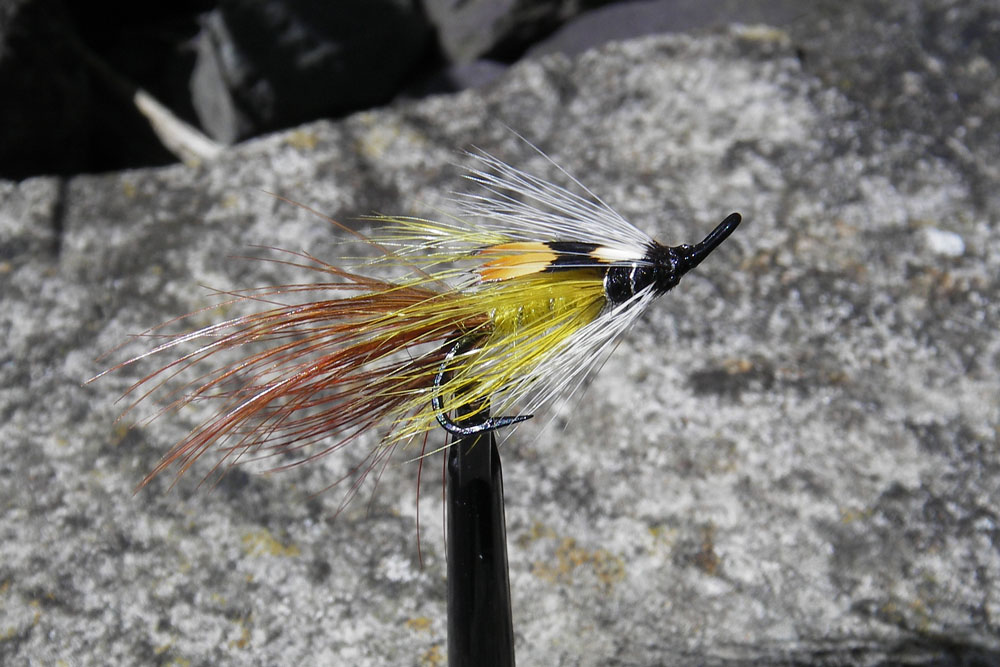
Hook: Samurai double 8 – 14
Tag: Fine oval or flat silver tinsel
Rear Hackle: Golden Pheasant rear body feather, wound.
Rear Body: Yellow Seal’s fur
Rib: Fine or medium oval tinsel
Centre Hackle: yellow cock
Front Body: Black Seal’s fur or floss
Rib: Fine or medium oval silver tinsel
Front Hackle: Badger cock
Head: Black
An excellent fly for both salmon and Dollaghan, especially when used as a dropper.
Contact Stevie
anglingclassics@aol.com or visit anglingclassics.co.uk.

